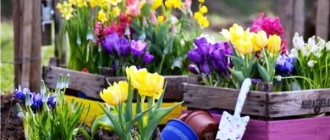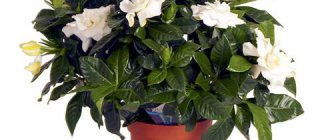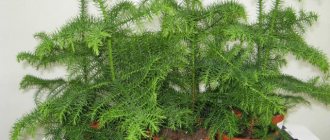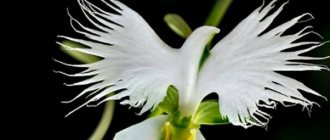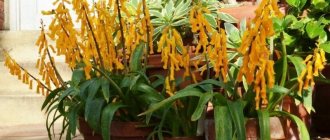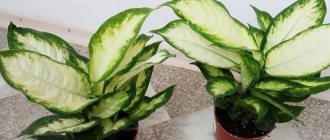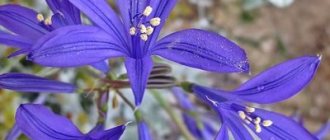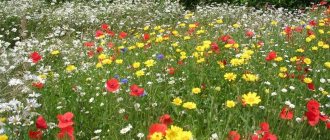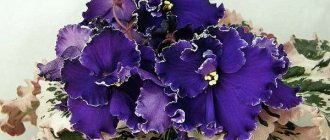Rules for caring for indoor begonia
“Due to its tropical origin, the level of air humidity is important for indoor begonia.”
The plant for growing indoors is undemanding and requires almost no care. Grows well at moderate air temperatures. It does not need to be replanted often. The only thing is that, due to its tropical origin, the level of air humidity is important to it. Some types of indoor begonia require a period of rest after the flowering period.
Proper lighting and watering regime
A room with good lighting is optimal for keeping begonias. For varieties that bloom profusely, diffused light is desirable, while moderate lighting is suitable for decorative deciduous varieties.
A room with good lighting is suitable for begonias.
It is best to place a container with begonia on the windowsill of a window facing west or east. In the cold season, when daylight hours are shortened, it is advisable to illuminate the perennial.
This plant loves moisture, so it needs frequent watering. You can only use soft, pre-settled water.
The excess accumulated in the pan is drained in a timely manner.
Watering rules:
- in the fall, from October, the flower is watered when the top layer of soil begins to dry out;
- in winter it is reduced to a minimum;
- with the arrival of the first spring month, they begin to moisten the soil more abundantly;
- In summer, the soil is moistened 2 times a week, in hot weather - daily.
Begonia needs frequent watering
Tuberous varieties of this perennial go dormant during the cold season. During this time they are placed in peat and not watered.
Air humidity
Due to its tropical origin, the plant requires high air humidity. It is prohibited to use the usual method for it - spraying it with a spray bottle, as this can lead to various diseases and the formation of spots on its leaves.
Experienced gardeners organize the optimal microclimate for the perennial by placing the pot on a saucer with wet peat poured into it. Another equally effective way is to pour pebbles into a container, fill the bottom with water and place the pot on the pebbles. The liquid that evaporates will create the necessary conditions.
Place pebbles in a container to moisten your begonia.
Recommended air temperature
Begonia does not withstand sudden changes in temperature, but feels good in moderate temperatures. In summer, it is best to keep the pot in a room with a temperature of 18 - 20°C; in winter, you need to make sure that the room is at least 15°C.
Soil and fertilizers
The plant develops well only in nutritious soil. To do this, take 1 part of chernozem and peat with two parts of leaf humus.
The bottom of the pot is covered with coarse river sand, then half filled with leaf humus. Black soil mixed with peat is poured into the remaining space.
Begonia needs to be fed regularly
In order for the plant to bloom and be beautiful, it is necessary to feed it. This is done 1 - 2 times a month, from the moment the buds form and until the end of flowering (spring - summer). You can feed begonia with mineral fertilizers.
Transfer rules
It is recommended to replant the plant once every 2–3 years, in the spring. To understand whether the begonia needs to be replanted, you should inspect the soil. If you can see roots from it that no longer fit in the pot, it’s time to replant.
The new container for the flower should be approximately 3 cm larger than the diameter of the old pot.
Carefully remove the plant and thoroughly clean the roots from the soil.
Carefully remove the plant from the pot
Dilute a weak solution of manganese and place the flower in it. After an hour, they take it out and carefully inspect the roots - there should be no damage or rotting areas on them. If there are any, they are removed.
The prepared pot of larger diameter is filled with a layer of expanded clay, and coarse sand is poured on top. Place the plant in a container, then fill the free space with soil, acting carefully so as not to damage the root system. Then water abundantly, do this regularly after transplantation.
Transplant into a larger pot
Callas: care during the season
Garden and indoor flowers similar to roses
Further care consists of watering, loosening, weeding and regular fertilizing.
Watering callas in summer
Calla lilies should be watered moderately, avoiding overwatering. But you can’t leave it in hot weather without watering: when the soil dries out, the calla stops blooming, turns yellow, sheds its leaves and goes into a dormant state.
Feeding callas
If you have well filled the planting hole for calla lilies with humus or compost, in the summer you can limit yourself to mineral fertilizing. Calla lilies react to excess nitrogen with powerful growth of the bush to the detriment of flowering, so the fertilizer must be balanced. You can use special instant or liquid fertilizers to feed flowering plants. They usually include approximately equal ratios of nitrogen, phosphorus and potassium (information is given on the packaging).
On soil not filled with humus, you can feed calla lilies with an infusion of mullein (1:10) or chicken manure (1:20).
What to do with flower stalks?
If you are not going to collect seeds, then at the end of flowering (when the color cover turns green), remove the flower stalks so that the plant does not waste energy on producing seeds and blooms longer.
in the photo: calla lilies blooming in the garden
Corm garden flowers and their photos
Bulbous perennial garden and indoor flowers photos, names
The most famous bulbous garden flowers are crocuses and their varieties. Next you can look at the photo of corm flowers, which are easily grown and propagated in various conditions.
CROCUS, SAFFRON – CROCUS
- Flowering time: depends on the variety
- Location: sunny or slightly shady
- Reproduction: division in autumn
There are four groups of this bulbous plant.
Dutch hybrids with large flowers (bloom in spring), hybrids of golden-flowered crocus (C. chrysanthus) with medium flowers (bloom in spring), early-blooming species with small flowers (bloom in early spring) and autumn-blooming species with small flowers.
Garden tuberous plants
Grow garden tuberous plants:
- Anemone (Anemone) begins to bloom in March-April, loves well-lit sunny or slightly shaded places, the division of baby tubers is carried out in the summer. Tuberous anemones are represented by chamomile-shaped and poppy-shaped forms. The former have flowers with yellow centers and narrowed petals. The most common is the tender anemone, which grows up to 15 cm. The flowers of the latter are similar to poppies and can be double or single. The most popular poppy anemone is the crowned one, the height of which reaches 30 cm.
- Begonia requires annual replanting and renewal of depleted soil, which is carried out in the spring. At the time of planting, it is very important that the tubers of the plant have already sprouted a little. Begonia tubers are not annual; they are capable of giving life to the plant for several years. Typically, begonias bloom two months after transplanting or planting. The older the plant, the faster it will bloom. Every year the plant lays buds lower and lower. Begonia blooms in June and prefers slightly shaded places and abundant watering, especially in dry weather. Sprouted tubers are used for propagation. Particularly popular are multi-flowered begonias (20 cm high) and drooping begonias (up to 60 cm). These plants grow equally successfully in home and garden conditions.
- Dahlias require special attention when storing tubers. After the above-ground part dies, the stems are cut off so that the root collar is preserved. The tubers are dug up, the soil is washed off, and t
Corms, rhizomes and tubers
Garden flowers: photos, names and descriptions (catalog)
Bulbous plants include not only plants with bulbs, but also those that have a “hardy” underground root apparatus, where nutrients accumulate, allowing the plant to survive even when its above-ground parts wither. Among them, crocuses and gladioli are especially interesting, the underground part of which is a corm that does not have the scales characteristic of real bulbs.
Corms, unlike bulbous plants, completely wither after flowering. However, in fertile soil they can grow again, since many “babies” often form on their tubers.
Each baby bulb, like the corm with which it was originally connected, is capable of producing a full-fledged plant. It will not bloom, but will in turn form a new corm or babies.
Over the course of several years, the new corms will grow larger until they are large enough to grow a flower stalk again. Tubers and rhizomes, as well as bulbs, are transformed trunks containing nutrients from which numerous buds develop. Each of them can produce a new plant.
Related link: Growing bulbous flowers from spring to late autumn
Anemones - planting and care in the garden
Author: Marina Chaika February 27, 2022 Garden plants
It doesn’t matter how your love for anemones began - from a gifted bouquet or admiring a neighbor’s flowerbed - this flower knows how to make you fall in love with it at first sight!
So that your passion for this bright beauty does not turn into a dreary burden, be sure to familiarize yourself with the requirements of this flower sissy for care, watering, soil, lighting and delicacies... Are you hungry yet? Then catch the first life hack on anemones: the capriciousness of this flower depends... on the variety! If you are not yet ready to pay a lot of attention to the flower you like, just choose a “more accommodating” anemone.
How not to get lost in the fascinating, but such a huge (today there are about 160 species!) assortment of anemones? How to choose an unpretentious or, on the contrary, the most “complex” anemone? How not to confuse the summer anemone with the autumn one, and even less fuss with the mandatory annual freezing of seeds - we’ll tell you right now.
Lily
Garden flowers that bloom all summer: photos and names
These elegant flowers will survive 4-5 years without replanting and, depending on the variety, will bloom from June to September. If you want to achieve earlier flowering, plant the bulbs in August-September, deepening them 7-15 cm into the ground. This procedure can be postponed until April-May, but the flowering period of the lily will shift.
Lilies
Before purchasing planting material, I recommend reading the important information in the publication What do the mysterious codes in the names of lilies mean? Features of growing different hybrids. And then on your site there will be exactly those plants that can bloom and develop well.
New bulbous perennials
Every year, gardeners become acquainted with new perennials, introducing them into their landscape compositions. Corydalis, crocosmia, tigridia, montbretia, arizema, simplocarpus, chionodoxa, galtonia - these are not the names of distant planets and constellations, but of tuberous and bulbous perennials! From all the variety, any summer resident can choose a perennial for his flower garden that is suitable in design, conditions and personal preferences. Bulbous plants can play the role of a leader in a flower bed, or they can be an equal companion to other flowering and ornamental plants.
Perennials will allow you to create a flowerbed for several years to come, which will save the owner energy and money. Perennials can grow in place for 3-4 years without replanting. Over time, they reproduce independently, daughter bulbs form on the bulbs, the tubers grow and can be divided, all this makes it possible to increase the planting of your favorite flowers without additional costs.
Household tuberous plants
Tuberous plants are also found among potted crops. When growing them, you should remember that the root system requires a spacious container, which directly affects the growth rate. This botanical feature allows propagation by dividing the rhizome, and also simplifies the watering regime.
Hemanthus
A small genus of flowering plants in the Amaryllidaceae family. Some varieties are used as indoor and greenhouse crops. The name is derived from the Greek words “blood” and “flower”, due to the color of the buds. The root system has the shape of a pear-shaped tuber and may protrude slightly above the soil surface.
The belt-shaped leaves are very short and fleshy. The flowers are collected in a powerful umbellate inflorescence, which is surrounded by an ovoid bract. At home, you can achieve the formation of a fruit in the shape of a round berry with black seeds inside. Only hybrid forms of hemanthus are usually found on sale, but classic species are also grown in nurseries. The most popular of them:
The plant is not suitable for beginners. Requires careful adherence to watering, humidity and lighting regimes. Hemanthus is sensitive to temperature conditions and soil composition.
Amaryllis
A perennial flowering plant, the genus includes only one species - amaryllis belladonna. The first description of this culture was given by K. Linnaeus in 1753; today many varieties and hybrids have been bred for growing indoors. Forms a single corm with a diameter of up to 12 cm. Linear leaves grow up to 60 cm in length and are highly sensitive to humidity.
In the warm season, 1-2 peduncles are formed on the plant, on which funnel-shaped buds are located. They can be colored white, red, pink or purple. Hybrids with terry multicolor petals look especially decorative. Amaryllis can be grown in a separate pot or in a group composition in a box.
Zamioculcas (Dollar Tree)
One of the most popular decorative foliage plants for landscaping an apartment or office. Belongs to the Araceae family and grows wild in the tropical forests of Africa. Active selection of Zamioculcas began at the beginning of the 20th century. The root system is very powerful and forms many tubers. The stem grows slowly, the shoots are fleshy and dense. The glossy leaves are dark green in color and have a slight thickening at the base.
Flowering at home is very difficult to achieve; the flower is represented by an inconspicuous ear of a light cream color. For growing at home, hybrids are usually used that are resilient and unpretentious. All parts of the dollar tree are poisonous; the sap causes irritation and redness of the skin.
Gloxinia
A tropical plant named after a German doctor. The genus includes only 4 species, some of them are suitable for growing indoors. It is a perennial tuberous plant that produces short shoots. The bright green leaves have a velvety texture and react negatively to exposure to water. Flowering is possible almost throughout the warm season. Bell-shaped flowers, depending on the variety, can be simple or double. They are colored red, purple or white. Among flower growers, varieties with two-tone petals or a complex pattern on their surface are especially popular.
Tuberous plants are distinguished by abundant and long-lasting flowering, a variety of colors and a pleasant aroma. Tuberous garden flowers do not require special knowledge of agricultural technology and can grow in the most unfavorable climatic conditions. To grow them, you can use flowerpots and hanging flowerpots.
Garden and indoor tuberous plants: types and cultivation
- View the full image
Tuberous plants
Tuberous plants: description
Garden tuberous plants
Hemanthus
How to plant tubers
Care Tips
Possible problems during cultivation
Ornamental flowering plants are grown from the tubers, which die after flowering, leaving living baby tubers in the ground, which enter a dormant period during the winter and germinate when favorable conditions occur. They can be left in the ground, or they can be dug up and stored until the next planting. The tubers of some plants can be eaten, for example, potatoes and Jerusalem artichoke.
Plants for the garden
Garden tuberous plants are represented by a wide variety and species diversity. This group includes primroses, crops with a medium and late growing season. They are resilient, but require special attention when growing and caring for them.
Anemone
Among flower growers, this plant is better known as “anemone”, since the petals begin to flutter even with minimal exposure to wind. This is a low-growing herbaceous shrub of the Ranunculaceae family. Forms a powerful rhizome with cylindrical tubers. The height of the stem varies from 30 to 70 cm. The leaves are formed on long petioles and have a dissected shape.
Flowers can be single or collected in umbellate inflorescences. Depending on the variety, the petals are white, purple or pink. The formation of flowers begins in early spring and lasts up to 2 months, then they form a hazel-shaped fruit with a characteristic pubescent surface.
Dahlia
A multi-species genus of flowering plants in the Asteraceae family. It is actively used in gardening, often used in landscape design for planting as a tapeworm, in group compositions. It is distinguished by the large size of its flowers and the variety of colors and textures of its petals.
Depending on the variety, the stem can grow to a height of up to 2.5 m. It forms powerful and fleshy tubers that tolerate division well. Dahlias begin to bloom in mid-summer and remain decorative until the end of the season. The plant is grown as a perennial crop; replanting to a new location is required every 5-8 years.
Gladiolus (Skewer)
A perennial of the Iris family, most species grow in Africa. The root system is represented by a round corm, which is actively growing and developing. Depending on the varietal group, the height of the stem varies from 50 to 150 cm. The leaves are very thin and have a characteristic sword-shaped shape.
Gladioli gained their popularity thanks to their decorative flowers. It is collected in a long spike-shaped inflorescence, growing up to 80 cm in height. The buds are funnel-shaped, the petals have a simple or terry texture. Interesting varieties of swords:
- Lace swirl;
- Moon trail;
- Magic of color;
- Oscar;
- First grader.
Gladiolus has high vitality and quickly adapts to the climate and soil composition. Some gardeners dig up tubers after flowering to store them indoors, which reduces the risk of plant death.
Crocosmia (Montbrecia)
Decorative flowering crop for growing in the garden. The plant has been actively used in landscape design since the late 19th century; in some regions it is called “Japanese gladiolus.” Forms a powerful bush up to 100 cm high. The root system is represented by large corms in the shape of a cluster. The leaves are collected in a basal rosette, have a sword-shaped shape, and often their surface is corrugated. Paniculate inflorescences develop in mid-summer and remain attractive until September.
Each flower is shaped like a five-pointed star; the petals can be curved back. Depending on the variety, their diameter varies from 2 to 5 cm, the buds are usually colored red, yellow or orange. Crocosmia looks best in a group planting or in a mixborder in the background.
Does not tolerate darkening and increased acidity of the soil, which is important to consider when choosing a location for a flower bed.
Callas - growing at home and in the garden
Author: Marina Chaika February 09, 2022 Garden plants
Calla plant (lat. Calla) , or Zantedeschia (lat. Zantedeschia) is a genus of perennial plants of the Araceae, or Aronicaceae family. The calla flower grows in damp places in South America and Africa, from Nigeria to Tanzania. It is a relative of such a plant as calla lily, or marsh calla, the only representative of its genus, whose range is located in the Northern Hemisphere. Zantedeschia is sometimes called Ethiopian calla lily, or Richardia. The flower received the name “zantedeschia” from the German botanist Kurt Sprengel, who named it in honor of his friend the Italian botanist Giovanni Zantedeschi, but most often zantedeschia is still simply called calla lily. The attractiveness of this plant for gardeners is not only in the very large, showy leaves and unusual flower shape, but also in the fact that calla lilies can be grown both in the garden and at home, in a pot.
Related article: List of pests of indoor plants: control and prevention
Tuberous plants: description
Tubers are short shoots of plants with axillary buds that have a rounded shape. They develop at the ends of elongated shoots of the rhizome. The tubers store a large amount of nutrients that plants use to feed themselves during winter or drought to extract the energy needed to restore growth the following season.
Tubers come in stem and root varieties and are used for plant propagation:
- Stem tubers usually form on the subcotyledonous knee, which is located below the cotyledonary node. Often, such tubers have one or two epicotyledonous knees - plant parts of seedlings between cotyledons with developed leaves. Stem tubers have a vertical direction of germination and an ovoid shape. At the narrowed end there are several vegetative buds.
- Root tubers form on the sides of the parent plant and are located shallow underground. Many such tubers live as long as the plant grows and develops, after which they die. But the tubers of some plants, for example, begonias, can live long and give life to several generations of plants.
The variety of tuberous plants allows gardeners to grow them both in the garden and at home.
Tuberous flowers
Tubers are shortened, modified underground shoots that acquire a conditionally spherical shape as a result of the growth of internodes.
Tubers are usually formed at the ends of the lateral shoots of the rhizome - stolons. The tubers of some plants are edible, such as Jerusalem artichoke or potatoes. Among the tuberous plants, the majority are herbaceous perennials, the ground part of which completely dies at the end of the season, but emerges from the growing point in the spring. During the season, the plant forms many tubers, so these crops have no problems with vegetative propagation. In cool climates, tubers overwintering in the ground need to be well covered, but if the winters in your area are really harsh, then it is better to dig up the underground part of the plant for the winter.
Among the decorative tuberous crops, gloriosa, sinningia, tuberose, caladium, smithiana, herbaceous peony, canna, anemone, begonia, diplodenia, delphinium, gesneria, dahlia, cyclamen, freesia and arrowroot are widely popular.
Tuberous plants do not tolerate acidic and too dense soils and require balanced watering. Before planting tubers, the area is fertilized with organic matter, and sand is placed in each hole for drainage.
Modified underground shoots: rhizome, tuber, bulb, corm.
Rhizome is an underground shoot of perennial herbs, subshrubs and shrubs. Externally, the rhizome is similar to the root, but differs from it in its horizontal location in the soil, the presence of scale-like leaves, scars from fallen buds and adventitious roots. An apical bud develops at the top of the rhizome, and axillary buds develop in the axils of the scales. From the buds of the rhizome, above-ground shoots develop annually, dying off in the fall. The internal structure of the rhizome is typically stem. Most often, the rhizome is an organ of vegetative propagation, and in a number of plants (water lily, lily of the valley) it serves as a storage place for nutrients.
A tuber is a modified shoot with a very thickened stem in which nutrients are stored. They appear as thickenings on a thin underground shoot - the stolon. The place where the tuber attaches to the stolon is called its base. The tuber has apical and lateral buds - eyes. Tubers are formed in plants such as potatoes and Jerusalem artichokes. They perform a storage function and are organs of vegetative reproduction.
The bulb is a short underground shoot with succulent leaves attached to a short stem - the bottom.
At the top of the bottom there is an apical bud, in the axils of the succulent scales there are lateral buds, giving rise to young baby bulbs. The succulent scales store reserve nutrients. The outside of the bulb is often covered with dry scales that play a protective role. Bulbs are formed in onions, lilies, garlic, and tulips.
The corm is similar in appearance to an onion, but differs from it in its highly overgrown bottom, where nutrients are stored. On top it is covered with dry filmy leaves. The corm has well-developed apical and axillary buds, giving rise to flowering shoots and baby corms. Corms are formed in colchicum, gladiolus, and saffron.
Fig.27. A-rhizome: 1-lily of the valley, 2-wheatgrass; B-potato tubers, B-bulbs: 1-onion, 2-lily-saranka, 3-tulip; G-crocus corm.
Sheet
A leaf is a lateral vegetative organ growing from a stem, having bilateral symmetry and a growth zone at the base. Main functions of the sheet:
- depot of reserve nutrients;
-organ of vegetative reproduction.
The leaves of most plants have a petiole and a leaf blade. Leaves that do not have a petiole are called sessile.
Leaves can be simple or compound. Simple leaves have one leaf blade. A compound leaf consists of several leaf blades attached to a common petiole using their own petioles.
Fig.28. The leaves are simple and complex: 1-lilac, 2-apple, 3-maple, 4-clover, 5-dandelion, 6-rosehip, 7-raspberry, 8-strawberry, 9-lupine.
The leaves are arranged on the stem in a certain order. Leaf arrangement
there are three types: regular
— one leaf per stem node (birch, poplar);
opposite
- two leaves extend from the node, located opposite each other (maple, lilac);
whorled
- at least three leaves extend from the node (bamboo).
Fig.29. Leaf arrangement: 1 - alternate; 2-opposite; 3- whorled
In addition, leaves differ in the type of venation. Veins
- These are vascular-fibrous bundles, clearly visible on the leaf blade. They perform mechanical and conductive functions. There are three main types of venation: reticulate, parallel and arcuate. Reticulate venation
subdivided into
pinnate:
smaller ones extend from the main vein (oak, aspen);
and palmate:
the main veins extend from the base of the leaf blade (maple).
Such venation is more common in dicotyledonous plants. For monocotyledonous plants, parallel
veining is more typical: the veins are located parallel to each other (wheat, corn);
and arcuate
- the veins are arranged in the form of arcs (lily of the valley).
Dahlias: growing from seeds and tubers
Did you know that 90% of your success in growing dahlias in full bloom depends on how you... store them?
In second place is the right soil. Gardeners look for signs of disease or pests, but the most common cause of death of first or transplanted dahlias is unsuitable soil. Yes, dahlias can heroically withstand changes in acidity, but good soil permeability is vital for this plant. If the site you have chosen cannot boast of such, this can be easily corrected. When digging the soil in the autumn, add a little ash, peat, humus, sand to the soil, and add chopped straw.
It will also be useful to spread straws in the spring, after planting the tubers. It will help retain precious moisture and save you from unnecessary work on loosening the soil.
Read more tips and secrets for growing your favorite dahlias in our article.
Irises: growing in open ground
Author: Marina Chaika February 27, 2022 Garden plants
Iris means “rainbow” in Greek. Today this rainbow has more than 700 shades and 35 thousand varieties! But it’s not just the colorful and delicate colors of the cockerels that captivated us: perfumers all over the world value irises for their unique bright aroma.
Did you know that bearded irises are more drought tolerant than their beardless counterparts? That the orris root popular among traditional healers, confectioners and perfumers is actually the root of irises?
We will tell you about these and other secrets of iris in our article.
Why do some irises have no scent? How to save iris from slugs without using chemicals? Do irises need to be covered for the winter? How to prune iris bushes correctly and beautifully after flowering? Why don’t cockerels want to bloom even on “ideal” soil and watering?
What is a tuber
A tuber is usually called a thickened and modified root - an underground stem shoot of some plants. It has dormant buds, usually with one or more internodes (for example, like potatoes or Jerusalem artichokes), or a dense subcotyledon (a prominent representative is cyclamen).
Tuberous plants are represented by a wide variety of species, but the largest group is represented by flowers, among which there are perennials and annuals, indoor and wild specimens. In addition, tuberous plants can be divided into types based on the characteristics of the underground part. Here they usually talk about root tubers and corms.
Replanting begonias
Young specimens need a new pot every year, adults and beautifully flowering ones - every 2-3 seasons. The operation is performed in the spring for all begonias, except for the Lorrain and Elatior hybrids - they should be planted in fresh soil by the end of summer or beginning of autumn, before the first buds appear.
Soil for begonias
The substrate must have a neutral reaction, be permeable, and maintain structure. For plants, a ready-made store-bought mixture based on Begonia peat is suitable. The soil is made independently from pre-treated components:
- leaf soil - 2 parts;
- garden - 1;
- turf – 1;
- coarse sand – 0.3.
Choosing a pot
The shape and volume of the container depend on the type of begonia:
- decorative leaves need low and wide ones - in deep ones the rhizome will not master the lower part of the substrate, it will turn sour;
- beautifully flowering - of a regular shape, but tight, otherwise the beginning of the buds will be delayed until the begonia has entwined the entire clump;
- Kanes and scrubs are not so demanding; standard pots are suitable for them, the size of which is increased by 2-3 cm with each transplant;
- For tuberous begonias, low bowls with a diameter of 10-15 cm are recommended - this way the soil does not become acidified, a lump quickly becomes entwined, and the flower throws out buds.
Seedlings or cuttings must first be planted in containers of 5-6 cm. During the first 2-3 years they are increased by one and a half times, then by 2-3 cm for most species. Growing decorative deciduous begonia requires that the diameter of the new container will exceed the previous one by 4-5 cm.
Planting tuberous species
In the spring, the tubers are removed from storage, exposed to light directly in the old substrate, and watering and temperature are increased. Dormant buds will quickly wake up and sprouts will appear.
Only then is the begonia taken out of the soil, sand or sawdust, inspected, if necessary, cleaned, and the wounds are powdered with fungicide or ash. The same should be done when dividing the tuber.
Drainage, a layer of coal, then a substrate are placed in the pot. Begonias are planted with their sprouts facing up. The tuber is dug in so that the part facing outward is only slightly sprinkled with soil. Watered.
Transplanting bush species
Plants try to move over without destroying the coma. Old soil is shaken off only as a last resort, if the root rots or the substrate is damaged:
- Place drainage, a layer of coals, and a little fresh soil at the bottom of the pot.
- A begonia with a lump is placed in the center, the stem is buried 2-3 cm.
- Fill and compact the substrate on the sides.
- Water with a root formation stimulator.
The first time after transplantation, the plant should be shaded more than usual. As soon as the bush begins to grow, a new leaf appears, the pot is moved to a permanent place.
Tall garden flowers
Among the most popular representatives are the following types:
- Alstroemeria
. Garden flowers resemble lilies and orchids. The height of the peduncle reaches 100 cm. The color of the flower is as follows: white, cream, golden, orange, lilac, purple with splashes. The following varieties are very popular: Alicia, Beauty, Canaria and Orange Queen. - Peonies
. These flowers for the garden will become a bright decoration. They grow up to 100 cm in height. Flower color ranges from white to dark red. Among the most popular varieties are the following: Shirley Temple, Charles White, Sarah Bernhardt and Sorbet. - Phloxes
. The flowers are tubular-funnel-shaped. They emit a pleasant aroma. The color can be different: white, pink, red, blue, purple and other shades. The most beautiful are: Neon Jade, Cyclamen and Blue Sea.
